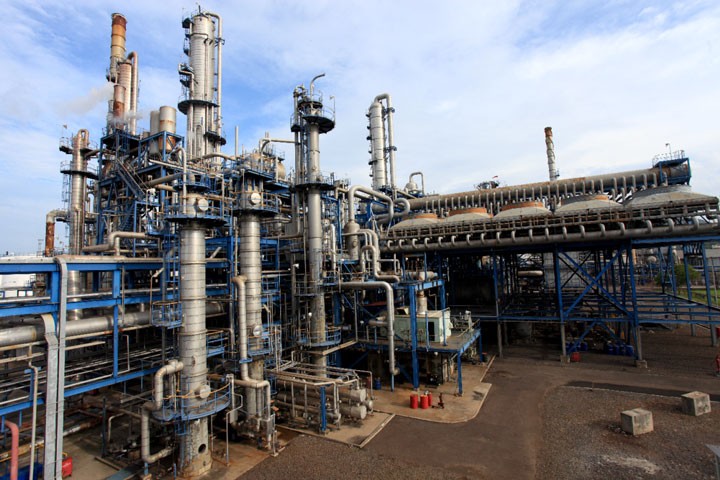Popular Reads
Top Results
Can't find what you're looking for?
View all search resultsPopular Reads
Top Results
Can't find what you're looking for?
View all search resultsLower oil prices benefit petrochemical producer Chandra Asri
Change text size
Gift Premium Articles
to Anyone
T
he largest chemical manufacturer in Indonesia, Chandra Asri Petrochemical, recorded a robust performance in the first six months of 2016. The company made US$131 million in net profit, seven times higher than the $17 million profit in the same period last year.
The impressive performance by the largest naphtha cracker operator in Indonesia was supported by several factors, such as a slump in oil prices, which hit below $50 per barrel, and increasing production capacity. The oil price is one of the determining factors in the operations of Chandra Asri, as the company uses petroleum naphtha as its main raw material.
Based on the annual report of 2015, the average cost of naphtha per ton, which is linked to the Brent crude price, decreased by 40.7 percent to $552 compared to $931 in 2014. The current price for naphtha for August 2016 delivery is even lower, at around $379 per ton.
Similarly, the average cost of benzene decreased by 43.6 percent to $721 per ton compared to $1,280 in 2014. Benzene is the main raw material in the production of styrene monomer, which is mainly used in manufacturing plastics, latex and tires. The current price of benzene for August 2016 delivery is around $650 per ton, lower than last year's average price.
 Source: Bareksa(Bareksa/Bareksa.com)
Source: Bareksa(Bareksa/Bareksa.com)
As of August 2016, crude oil prices stood in the range of $41 to $47 per barrel, 50 percent lower than mid-2014 when the oil price was still at $100. The decline in oil prices has been occurring since mid-2014, driven by the high supply of shale oil from the US.
Plant integration
Global oil prices have plunged since 2015, but why has the company seen significant improvement in its finances this year? The answer lies in its operations.
In 2015, Chandra Asri, whose majority shares are held by Barito Pacific and Thai-based company SCG Group, shut down its cracker facility for 85 days for scheduled turnaround maintenance (TAM) as part of its periodic maintenance program. It resulted in a lower sales volume by 25 percent year-on-year to 1.22 metric tons in 2015 from 1.65 metric tons in 2014.
At the same time, however, it conducted an expansion to integrate the plant with new units in conjunction with the cracker expansion project.
 Source: Financial Report, Bareksa(Bareksa.com/Bareksa)
Source: Financial Report, Bareksa(Bareksa.com/Bareksa)
In the first half of 2016, Chandra Asri began to gain profits from the TAM and the plant integration, enjoying a 43 percent increase in production capacity and increasing olefin and butadiene sales by 190 percent and 38 percent year-on-year, respectively.
Increasing capacity also generated better operating profit margins. In the first half of 2016, the company’s revenue increased to $882 million, from the previous year’s $799 million. At the same time, costs were trimmed by 6.6 percent to $664 million from the previous year’s $711 million, thanks to a 56 percent drop in purchases of finished goods to $56 million from the previous year's $126 million.
As a result, the company’s gross profit margin increased to 25 percent in the first half of 2016, from only 11 percent in the same period last year. (ags)










